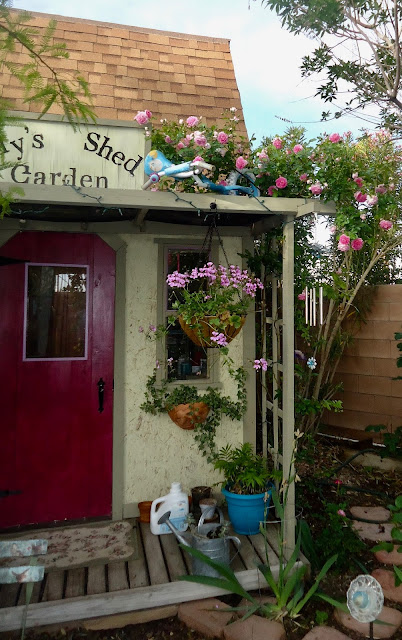Every year glossy catalogs full of gorgeous flowers entice gardeners to try growing bulbs that aren't suited to their climate. Many tulips, for example, won't come back and bloom a second year. They just can't take the heat. Most fall bulbs come from Holland where the weather is cool and cloudy. Here in Las Vegas, the temperature can reach as high as 118 degrees and sunny days are the norm from March on. bulbs that originate from semi-arid and desert regions with seasonal rain, are naturals for Southwest gardens. Under the term “bulbs” are also plants that come from corms, rhizomes and tubers.
Irises grow from a rhizome — an elongated, swollen, underground stem and are among the easiest of perennials to grow in the desert Southwest. They require very little care for the beauty they give. There are many types of iris around the world, many of which can be planted in the desert Southwest. Of the many types of irises, bearded irises are some of the more common. In general, the bearded irises are native to the Mediterranean and near-desert areas. They grow to be anywhere from 15-28" tall except for the dwarf bearded iris, which grows between 5-15" tall. They grow in a variety of colors and can be used to brighten up any yard or garden.


The best time to plant bearded irises is in the late summer through early fall; however, irises are not particularly picky about planting time. Bearded irises, as well as other types of irises are very drought tolerant. Watering is only necessary under the most severe drought conditions. Irises will produce dramatic, beautiful blooms with minimal care, and are a very good plant choice for low or no maintenance gardens.
Bearded irises prefer a well-drained soil with a pH of 6.5-7. The soil does not need to be nutrient rich but adding phosphorus and other nutrients to the soil in the fall can be beneficial. In the winter, the iris can be mulched lightly to protect it from the weather and aid in weed control. Most bearded irises grow best in full sun; however, all of those "full sun" recommendations are made for gardeners who get half the sunshine we do. Shade makes it possible for bulbs to flourish despite our hot climate and helps their flowers last longer. Afternoon shade and shade from trees is especially helpful. As a general rule, the colder the climate where the bulbs come from, the more shade they need.
Bulbs best suited to the desert Southwest are summer dormant and grow during our cool mild winters. When they are actively growing, it is vital to provide regular watering and fertilizing, yet leaving them undisturbed in the soil.
During this period, energy for the following season’s growth and bloom is being directed to the plant’s leaves, stems, and roots. Any relocation of bulbs should be done only when they are dormant.
Organic matter such as coarse peat moss or wood mulch provides a slight acidifying effect and moisture-holding quality to the soil. In heavy soils, 1 to 2 inches of sand worked into the soil will improve drainage.
Successful bulb gardeners add a couple of teaspoons of phosphate per square foot. As a precaution against soil-borne insects, a granular application of a product called “Merit” may also be worked into the soil before planting.
Rather than follow the calendar, it is recommended that bulbs not be planted until day temperatures reliably drop into the low 80-degree range.
If planting into a bed, bulbs are best planted in clumps or groups rather than in rows. The depth of planting is most important, so carefully follow readily available bulb planting guides. As a general rule, it is recommended to plant bulbs at a depth of 2 to 3 times the thickness of the bulb.
After planting, immediately water thoroughly down to the bulb depth. Thereafter, water only frequently enough to maintain slight moisture around the bulbs. or wood chip mulch over the entire soil surface will conserve moisture, discourage weeds, and help regulate temperatures. When growth begins, water plants in the sun every seven to 10 days. For shaded bulbs, watering every two to three weeks will be sufficient.
Using a lower nitrogen fertilizer such as 16-20-0 (ammonium phosphate) twice a year will encourage healthy plants. After bulbs have finished blooming, reduce watering and allow the plants to dry. It is important not to remove leaves from the plant until they brown and die.

























































